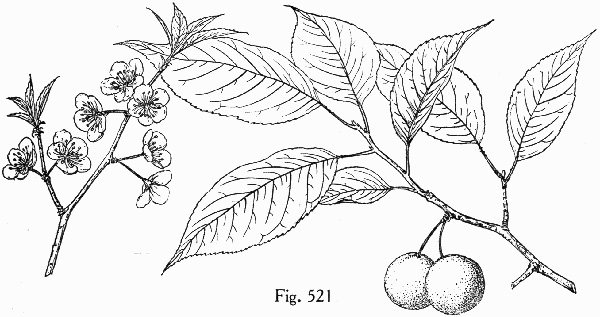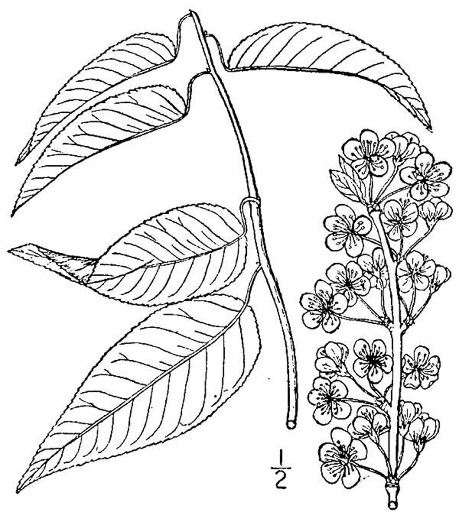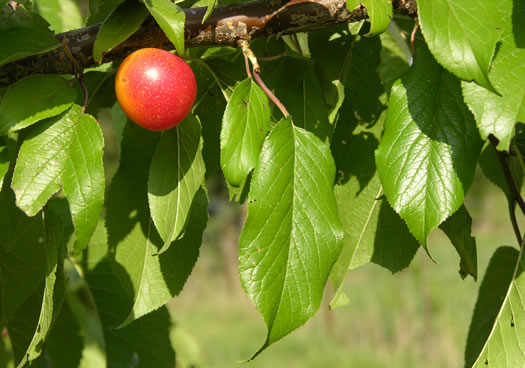Spermatophytes (seed plants): Angiosperms (flowering plants): Eudicots: Core Eudicots: Rosids: Fabids: Rosales
WEAKLEY'S FLORA OF THE SOUTHEASTERN US (4/24/22):
Prunus hortulana
FAMILY
Rosaceae
Go to FSUS key
Dig deeper at SERNEC, a consortium of southeastern herbaria.
SYNONYMOUS WITH
PLANTS NATIONAL DATABASE:
Prunus hortulana
FAMILY
Rosaceae
SYNONYMOUS WITH Flora of North America north of Mexico, vol. 9 (2014)
Prunus hortulana
COMMON NAME:
Hortulan Plum, Wild-goose Plum
To see larger pictures, click or hover over the thumbnails.
Ron Lance rwl_prunushortulana
September
In cultivation
Leaves with a gland on the tip of each tooth. Fruit 2-3cm across, per Trees of the Southeastern United States (Duncan & Duncan, 1988).
WEAKLEY'S FLORA OF THE SOUTHEASTERN US (4/24/22):
Prunus hortulana
FAMILY
Rosaceae
SYNONYMOUS WITH
PLANTS NATIONAL DATABASE:
Prunus hortulana
FAMILY
Rosaceae
SYNONYMOUS WITH
Flora of North America north of Mexico, vol. 9
Prunus hortulana
If a search such as "Carex leptalea var. leptalea" doesn't deliver the results you want, try "Carex leptalea".
Or, to minimize chances of a misspelling, try just "Carex le".
Less is more: If "pencil flower" doesn't deliver the results you want, try "pencil".




